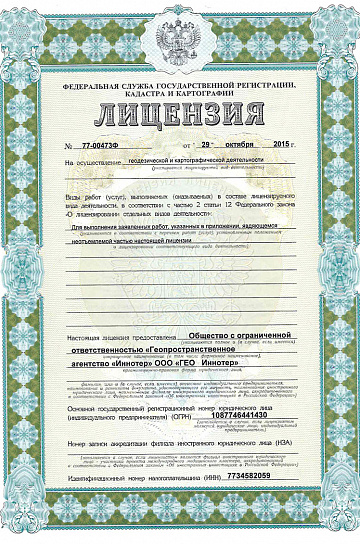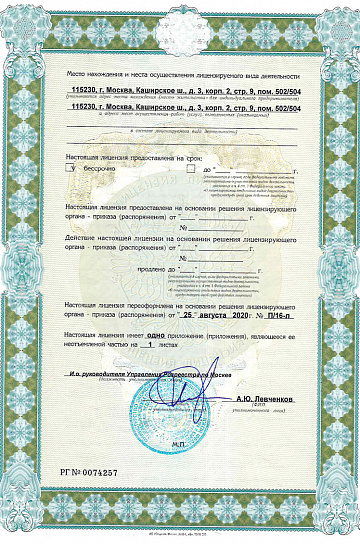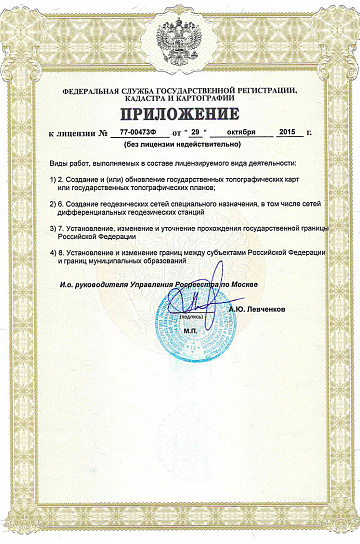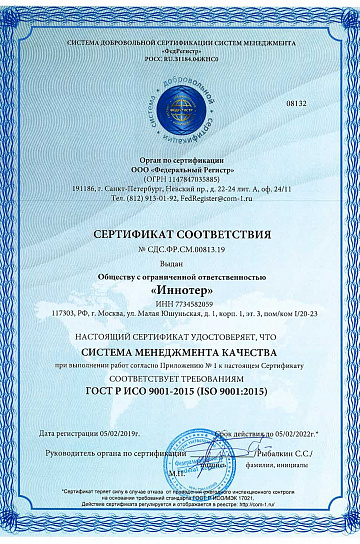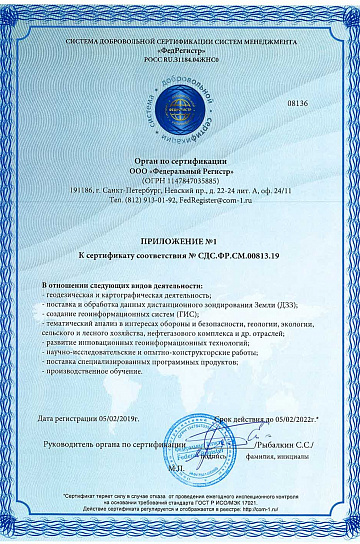Object contour feature extraction (object detection) is the process of finding instances of objects in an image. When recognizing objects, it not only establishes the presence of an object in the image but also determines its location.
Object detection is achieved through contour search.
Contour search involves a set of mathematical methods aimed at identifying points in a digital image where the brightness of the image changes sharply. These points are organized into a set of curved lines and are called edges, boundaries, or contours.
Extracting contour features of objects in cartography allows for creating precise and informative maps with high detail. Contour features are used to highlight the boundaries of objects on the map and provide important information about the shape and location of these objects.
Prices for services
|
Activities |
Free / Cost per unit of measurement |
|---|---|
|
Consultation |
Free |
|
Collection of images (if necessary), preliminary analysis of source data, additional and reference materials |
Free |
|
Ordering images (if necessary) |
From 0.5 to 70 USD per 1 km2 depending on the type of imagery (archive-new, mono-stereo, resolution) * |
|
Cost of creating a GIS project |
From 1 USD per 1 km2, calculated individually for each specific order and depends on the amount of processed remote sensing data, presence (absence) of control points, and the used mapping coordinate system. |
|
Cost of thematic processing of remote sensing data |
Cost of extracting contour features per 1 km2 starting from 200 rubles and depends on the complexity category and execution time. |
|
Execution time |
From 20 working days (depends on the volume, complexity category, availability of remote sensing data, additional and reference materials) |
* working days
** from the date of receiving 100% advance payment for remote sensing data materials. The completion time depends on the number of km2, the type of product being created, the availability of archival remote sensing data, additional and reference materials.
The cost of execution is calculated on an individual basis, taking into account a specific of task.
After receiving the task description, we calculate the cost and send you a commercial offer.
Period of execution
|
Coordination of questions, analysis of the availability of remote sensing data, additional and reference data |
From 1 to 5 days* |
|
Contract signing |
From 1 to 5 days* |
|
Receipt of images |
From 3 to 10 days ** |
|
Receipt of source material (paper plan or scanned) |
From 1 to 20 days* |
|
Creation of GIS project for information refinement |
From 5 days* |
|
Thematic processing |
From 15 days* |
|
Conducting controls |
From 5 to 10 days* |
|
Preparation of technical report on work execution |
From 5 to 10 days |
|
TOTAL TIME |
From 20 days* |
** from the date of receiving 100% advance payment for remote sensing data materials. Completion time depends on the number of km2, the type of product being created, the availability of archival remote sensing data, additional and reference materials.
How to place an order:
Need for consultation?
Fill the form and we will contact you
Stages of service provision
The result of the provision of services
The customer receives the following results:
-
Contour lines of objects: The customer receives a set of contour lines that describe the shape and sizes of objects on the ground. These contour lines can be presented as vector data, where each line is represented as a sequence of points.
-
Geometric parameters of objects: The customer can also obtain information about the geometric parameters of objects, such as area, perimeter, length, and width. These parameters can be useful for the analysis and comparison of objects on the ground.
-
Attribute data: In addition to geometric parameters, the performer can also extract attribute data of objects. These data may include information about the type of object, its name, classification, as well as other characteristics that can be useful for the analysis and use of cartographic data.
-
Graphic representation of objects: As a result of contour feature extraction, the customer can create a graphic representation of objects on the ground. This can be in the form of a map where objects are represented by contour lines and attribute data, or in other graphic formats that can be used for further analysis and visualization of data.
All results are delivered on electronic media or via the Internet through FTP servers, and textual materials are also duplicated in printed form.
Requirements for Source Data
If it is not possible to provide the specified information or the purpose of using the obtained data, the specialists of "GEO "INNOTER" LLC will analyze the requirements and propose an optimal solution to the problem.
Related services

Customers
FAQ
- area of interest (location / coordinates of the object in any convenient form, and the area of the object);
- the specific task to be solved with the application of the product to be created.
- Terms of thematic processing based on space or aerial survey data depend on the volume and complexity of the order. Minimum term - from 10 (ten) working days;
- Terms of delivery of finished products from 5 (five) working days.
Object detection in an image is the process of automatically identifying and localizing various objects or regions of interest (ROI) in a digital image. This is a crucial task in the fields of computer vision and machine learning, finding applications in various areas, including automatic face recognition, vehicle detection, medical diagnostics, image annotation, robotics, video surveillance, and more.
Various methods and algorithms are employed for object detection in images. Some of the most popular methods include:
-
Classical computer vision methods:
- Haar Cascade Methods.
- Edge and contour processing methods.
- Template matching methods.
-
Machine learning methods:
- Feature-based object detectors (e.g., HOG, SIFT, SURF).
- Machine learning-based object detectors, such as Support Vector Machines (SVM), Random Forests, Neural Networks, etc.
-
Deep learning:
- Convolutional Neural Networks (CNN) are the most popular method for object detection in images. Networks like Faster R-CNN, YOLO (You Only Look Once), and SSD (Single Shot MultiBox Detector) provide high accuracy and detection speed.
The object detection process in an image typically involves the following steps:
- Load the image.
- Apply the object detector (e.g., a neural network) to search and localize objects.
- Determine the classes of objects (e.g., "cat," "dog," "car").
- Visualize the results with annotated bounding boxes or object labels.
Object detection in images is a crucial component of many applications that require the analysis of visual information. The accuracy and speed of detection may vary depending on the chosen method and model, so selecting an appropriate approach depends on specific requirements and the context of the task.









